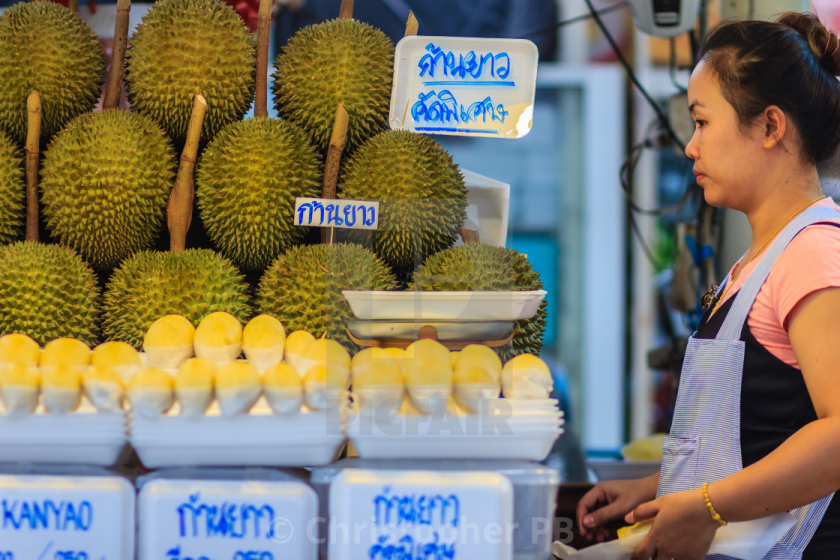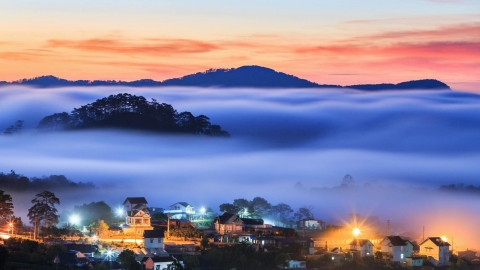According to SCMP, the Pak Chong-Khao Yai durian, a variety of the popular Mon Thong durian grown in Nakhon Ratchasima province in northeastern Thailand, has been granted geographical indication certification by the country's authorities.
At the durian fair in Pak Chong district, co-organized by the Tourism Authority of Thailand, this variety was widely sold. Pak Chong-Khao Yai durians are described as sweet and dry, with unbroken segments, and most importantly, without an unpleasant smell (to many). At this fair, many celebrities came to try the “odorless” durian.
The Pak Chong-Khao Yai durian variety was granted geographical indication status by Thailand's intellectual property department last year. This is a label applied to products that correspond to a specific geographical location and have characteristics or qualities associated with that particular place, such as Scottish whisky.

A durian stall in Bangkok, Thailand.
Thailand is the world’s top durian exporter, earning about 187 billion baht ($5 billion) last year amid soaring demand from China. China’s fresh durian imports quadrupled to $2.3 billion in 2020 from 2017, according to United Nations data. Durian overtook cherries to become China’s top imported fruit by value in 2019.
Although durian is popular in many Southeast Asian countries and China, in other countries it is a controversial fruit, again due to its smell. In 2018, a Sriwijaya Air (Indonesia) flight was delayed for 60 minutes after passengers complained of an “unbearable” smell, which turned out to be from bags of durian. The plane was not allowed to take off until all the durians were removed.
In 2019, students and staff at the University of Canberra (Australia) were evacuated due to a “toxic smell”, which turned out to be due to durians left near the library’s air vents. Rescue teams were called and had to put the durian in an airtight bag to dispose of it. In many cities, people are banned from bringing durians into hotel rooms or on public transport.


































